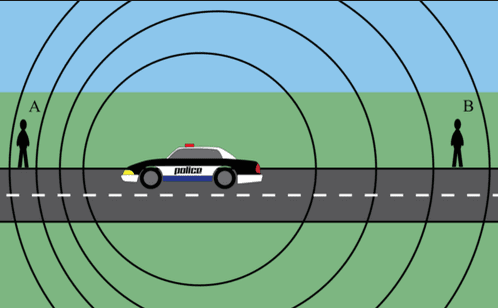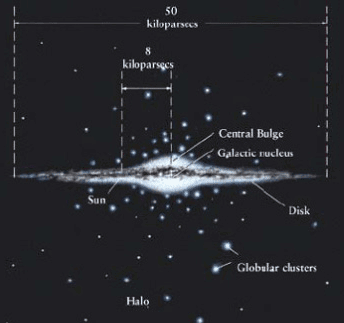 Globular clusters, or GC, are roughly spherical groupings of from 10,000 to several million stars packed into regions of from 10 to 30 light years across. They commonly consist of very old Population II stars—just a few hundred million years younger than the universe itself—which are mostly yellow and red, with mass just less than two solar masses. Such stars predominate within clusters because hotter and more massive stars have exploded as supernovae, or evolved through planetary nebula phases to end as white dwarfs. Yet a few rare blue stars exist in globulars, thought to be formed by stellar mergers in their dense inner regions; these stars are known as blue stragglers.
Globular clusters, or GC, are roughly spherical groupings of from 10,000 to several million stars packed into regions of from 10 to 30 light years across. They commonly consist of very old Population II stars—just a few hundred million years younger than the universe itself—which are mostly yellow and red, with mass just less than two solar masses. Such stars predominate within clusters because hotter and more massive stars have exploded as supernovae, or evolved through planetary nebula phases to end as white dwarfs. Yet a few rare blue stars exist in globulars, thought to be formed by stellar mergers in their dense inner regions; these stars are known as blue stragglers.Globular cluster
 Globular clusters, or GC, are roughly spherical groupings of from 10,000 to several million stars packed into regions of from 10 to 30 light years across. They commonly consist of very old Population II stars—just a few hundred million years younger than the universe itself—which are mostly yellow and red, with mass just less than two solar masses. Such stars predominate within clusters because hotter and more massive stars have exploded as supernovae, or evolved through planetary nebula phases to end as white dwarfs. Yet a few rare blue stars exist in globulars, thought to be formed by stellar mergers in their dense inner regions; these stars are known as blue stragglers.
Globular clusters, or GC, are roughly spherical groupings of from 10,000 to several million stars packed into regions of from 10 to 30 light years across. They commonly consist of very old Population II stars—just a few hundred million years younger than the universe itself—which are mostly yellow and red, with mass just less than two solar masses. Such stars predominate within clusters because hotter and more massive stars have exploded as supernovae, or evolved through planetary nebula phases to end as white dwarfs. Yet a few rare blue stars exist in globulars, thought to be formed by stellar mergers in their dense inner regions; these stars are known as blue stragglers.Star cluster
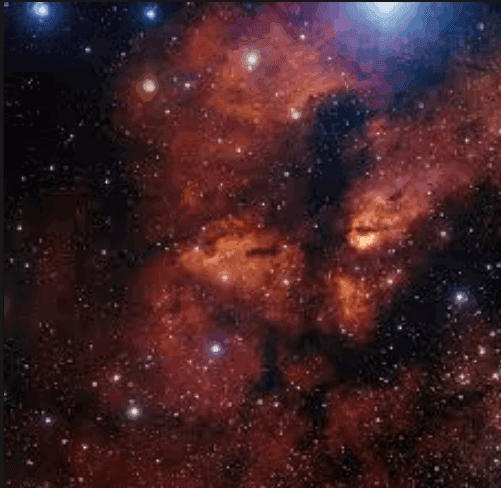
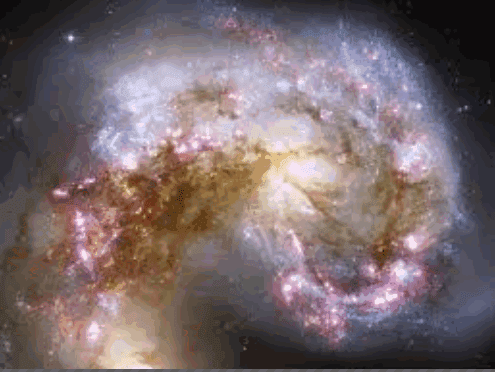 Star clusters or star clouds are groups of stars. Two types of star clusters can be distinguished: globular clusters are tight groups of hundreds of thousands of very old stars which are gravitationally bound, while open clusters, more loosely clustered groups of stars, generally contain fewer than a few hundred members, and are often very young. Open clusters become disrupted over time by the gravitational influence of giant molecular clouds as they move through the galaxy, but cluster members will continue to move in broadly the same direction through space even though they are no longer gravitationally bound; they are then known as a stellar association, sometimes also referred to as a moving group.
Star clusters or star clouds are groups of stars. Two types of star clusters can be distinguished: globular clusters are tight groups of hundreds of thousands of very old stars which are gravitationally bound, while open clusters, more loosely clustered groups of stars, generally contain fewer than a few hundred members, and are often very young. Open clusters become disrupted over time by the gravitational influence of giant molecular clouds as they move through the galaxy, but cluster members will continue to move in broadly the same direction through space even though they are no longer gravitationally bound; they are then known as a stellar association, sometimes also referred to as a moving group.Stars Collapse
As a star's core shrinks, the intensity of radiation from that surface increases, creating such radiation pressure on the outer shell of gas that it will push those layers away, forming a planetary nebula. If what remains after the outer atmosphere has been shed is less than 1.4 solar masses, it shrinks to a relatively tiny object about the size of Earth, known as a white dwarf. White dwarfs lack the mass for further gravitational compression to take place. The electron-degenerate matter inside a white dwarf is no longer a plasma, even though stars are generally referred to as being spheres of plasma. Eventually, white dwarfs fade into black dwarfs over a very long period of time.
Massive stars
During their helium-burning phase, very high-mass stars with more than nine solar masses expand to form red supergiants. Once this fuel is exhausted at the core, they continue to fuse elements heavier than helium.
The core contracts until the temperature and pressure suffice to fuse carbon (see carbon burning process). This process continues, with the successive stages being fueled by neon (see neon burning process), oxygen (see oxygen burning process), and silicon (see silicon burning process). Near the end of the star's life, fusion continues along a series of onion-layer shells within the star. Each shell fuses a different element, with the outermost shell fusing hydrogen; the next shell fusing helium, and so forth.
The core contracts until the temperature and pressure suffice to fuse carbon (see carbon burning process). This process continues, with the successive stages being fueled by neon (see neon burning process), oxygen (see oxygen burning process), and silicon (see silicon burning process). Near the end of the star's life, fusion continues along a series of onion-layer shells within the star. Each shell fuses a different element, with the outermost shell fusing hydrogen; the next shell fusing helium, and so forth.
Post-main sequence
As stars of at least 0.4 solar masses exhaust their supply of hydrogen at their core, their outer layers expand greatly and cool to form a red giant. In about 5 billion years, when the Sun enters this phase, it will expand to a maximum radius of roughly 1 astronomical unit (150 million kilometres), 250 times its present size. As a giant, the Sun will lose roughly 30% of its current mass.
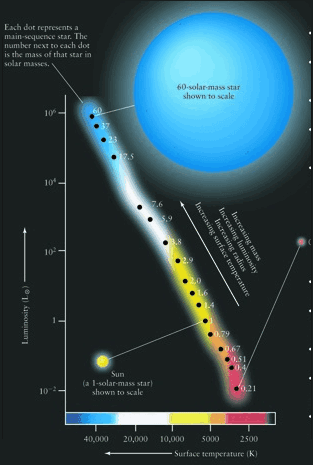
In a red giant of up to 2.25 solar masses, hydrogen fusion proceeds in a shell surrounding the core.

In a red giant of up to 2.25 solar masses, hydrogen fusion proceeds in a shell surrounding the core.
The Main sequence of stars
Every star generates a stellar wind of particles that causes a continual outflow of gas into space. For most stars, the mass lost is negligible. The Sun loses 10−14 solar masses every year, or about 0.01% of its total mass over its entire lifespan. However, very massive stars can lose 10−7 to 10−5 solar masses each year, significantly affecting their evolution. Stars that begin with more than 50 solar masses can lose over half their total mass while on the main sequence.
Protostar formation
The formation of a star begins with gravitational instability within a molecular cloud, caused by regions of higher density - often triggered by shock-waves from nearby supernovae (massive stellar explosions), the collision of different molecular clouds, or the collision of galaxies (as in a starburst galaxy). Once a region reaches a sufficient density of matter to satisfy the criteria for Jeans instability, it begins to collapse under its own gravitational force.
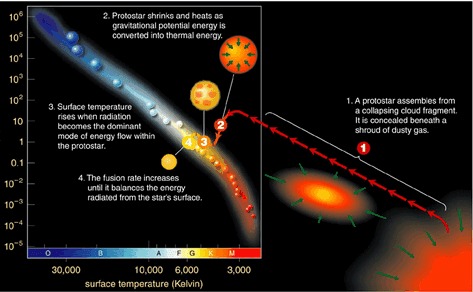 As the cloud collapses, individual conglomerations of dense dust and gas form "Bok globules". As a globule collapses and the density increases, the gravitational energy converts into heat and the temperature rises. When the protostellar cloud has approximately reached the stable condition of hydrostatic equilibrium, a protostar forms at the core. These pre–main sequence stars are often surrounded by a protoplanetary disk and powered mainly by the release of gravitational energy. The period of gravitational contraction lasts about 10 to 15 million years.
As the cloud collapses, individual conglomerations of dense dust and gas form "Bok globules". As a globule collapses and the density increases, the gravitational energy converts into heat and the temperature rises. When the protostellar cloud has approximately reached the stable condition of hydrostatic equilibrium, a protostar forms at the core. These pre–main sequence stars are often surrounded by a protoplanetary disk and powered mainly by the release of gravitational energy. The period of gravitational contraction lasts about 10 to 15 million years.
Early stars of less than 2 solar masses are called T Tauri stars, while those with greater mass are Herbig Ae/Be stars. These newly-formed stars emit jets of gas along their axis of rotation, which may reduce the angular momentum of the collapsing star and result in small patches of nebulosity known as Herbig–Haro objects. These jets, in combination with radiation from nearby massive stars, may help to drive away the surrounding cloud from which the star was formed.
Early in their development, T Tauri stars follow the Hayashi track—they contract and decrease in luminosity while remaining at roughly the same temperature. Less massive T Tauri stars follow this track to the main sequence, while more massive stars turn onto the Henyey track.
 As the cloud collapses, individual conglomerations of dense dust and gas form "Bok globules". As a globule collapses and the density increases, the gravitational energy converts into heat and the temperature rises. When the protostellar cloud has approximately reached the stable condition of hydrostatic equilibrium, a protostar forms at the core. These pre–main sequence stars are often surrounded by a protoplanetary disk and powered mainly by the release of gravitational energy. The period of gravitational contraction lasts about 10 to 15 million years.
As the cloud collapses, individual conglomerations of dense dust and gas form "Bok globules". As a globule collapses and the density increases, the gravitational energy converts into heat and the temperature rises. When the protostellar cloud has approximately reached the stable condition of hydrostatic equilibrium, a protostar forms at the core. These pre–main sequence stars are often surrounded by a protoplanetary disk and powered mainly by the release of gravitational energy. The period of gravitational contraction lasts about 10 to 15 million years.Early stars of less than 2 solar masses are called T Tauri stars, while those with greater mass are Herbig Ae/Be stars. These newly-formed stars emit jets of gas along their axis of rotation, which may reduce the angular momentum of the collapsing star and result in small patches of nebulosity known as Herbig–Haro objects. These jets, in combination with radiation from nearby massive stars, may help to drive away the surrounding cloud from which the star was formed.
Early in their development, T Tauri stars follow the Hayashi track—they contract and decrease in luminosity while remaining at roughly the same temperature. Less massive T Tauri stars follow this track to the main sequence, while more massive stars turn onto the Henyey track.
Doppler effect
The Doppler effect (or Doppler shift), named after the Austrian physicist Christian Doppler, who proposed it in 1842 in Prague, is the change in frequency of a wave (or other periodic event) for an observer moving relative to its source. It is commonly heard when a vehicle sounding a siren or horn approaches, passes, and recedes from an observer. Compared to the emitted frequency, the received frequency is higher during the approach, identical at the instant of passing by, and lower during the recession.
Maxwell’s equations for EM fields
James Clerk Maxwell first formally postulated electromagnetic waves. These were subsequently confirmed by Heinrich Hertz. Maxwell derived a wave form of the electric and magnetic equations, thus uncovering the wave-like nature of electric and magnetic fields, and their symmetry. Because the speed of EM waves predicted by the wave equation coincided with the measured speed of light, Maxwell concluded that light itself is an EM wave.
Electromagnetic radiation
Electromagnetic radiation (EM radiation or EMR) is a fundamental phenomenon of electromagnetism, behaving as waves and also as particles called photons which travel through space carrying radiant energy. In a vacuum, it propagates at the speed of light, normally in straight lines. EMR is emitted and absorbed by charged particles. As an electromagnetic wave, it has both electric and magnetic field components, which synchronously oscillate perpendicular to each other and perpendicular to the direction of energy and wave propagation.
Stars
A star is a massive, luminous sphere of plasma held together by its own gravity. The nearest star to Earth is the Sun, which is the source of most of the planet's energy. Some other stars are visible from Earth during the night, appearing as a multitude of fixed luminous points due to their immense distance. Historically, the most prominent stars were grouped into constellations and asterisms, and the brightest stars gained proper names. Extensive catalogues of stars have been assembled by astronomers, which provide standardized star designations.
Radio spectroscopy
Radio astronomy was founded with the work of Karl Jansky in the early 1930s, while working for Bell Labs. He built a radio antenna to look at potential sources of interference for transatlantic radio transmissions. One of the sources of noise discovered came not from Earth, but from the center of the Milky Way, in the constellation Sagittarius. In 1942, JS Hey captured the sun's radio frequency using military radar receivers.
Optical spectroscopy
Astronomical spectroscopy
Astronomical spectroscopy is the study of astronomy using the techniques of spectroscopy to measure the spectrum of electromagnetic radiation, including visible light, which radiates from stars and other hot celestial objects. Spectroscopy can be used to derive many properties of distant stars and galaxies, such as their chemical composition, temperature, density, mass, distance, luminosity, and relative motion using Doppler shift measurements.
Atomic spectroscopy
Instrument Spectrograph
The MEGARA spectrograph will be located on one of the telescope two Nasmyth platforms, and the optical fiber bundles will be routed from the Folded Cassegrain focus to the entrance of the spectrograph at the pseudo-slit position. MEGARA has a fully refractive optical system. The spectrograph is composed by a pseudo-slit, where the fibers are placed simulating a long slit 119 mm length and with a RoC of 1075 mm. Then the light passes through the collimator, which is composed by 5 lenses and has a focal length of 483 mm, and a slit shutter placed behind the first collimator lens. The geometry is fixed for all spectral resolution modes and it is 68 degrees between collimator and camera. The pupil has 160 mm diameter and it is the location for the VPH-gratings.
Theory of the Spectroscopy and spectrography
One of the central concepts in spectroscopy is a resonance and its corresponding resonant frequency. Resonances were first characterized in mechanical systems such as pendulums. Mechanical systems that vibrate or oscillate will experience large amplitude oscillations when they are driven at their resonant frequency. A plot of amplitude vs. excitation frequency will have a peak centered at the resonance frequency. This plot is one type of spectrum, with the peak often referred to as a spectral line, and most spectral lines have a similar appearance.
Spectroscopy and spectrography
Spectroscopy and spectrography are terms used to refer to the measurement of radiation intensity as a function of wavelength and are often used to describe experimental spectroscopic methods. Spectral measurement devices are referred to as spectrometers, spectrophotometers, spectrographs or spectral analyzers.
Spectroscopy
Spectroscopy is the study of objects based on the spectrum of color they emit, absorb or reflect. Spectroscopy is an important investigative tool in astronomy, where scientists use it to analyze the properties of distant objects. Typically, astronomical spectroscopy uses high-dispersion diffraction gratings to observe spectra at very high spectral resolutions. Helium was first detected by analysis of the spectrum of the sun. Chemical elements can be detected in astronomical objects by emission lines and absorption lines.
Animal color vision
Many species can see light with frequencies outside the human "visible spectrum". Bees and many other insects can detect ultraviolet light, which helps them find nectar in flowers. Plant species that depend on insect pollination may owe reproductive success to their appearance in ultraviolet light rather than how colorful they appear to humans. Birds, too, can see into the ultraviolet (300–400 nm), and some have sex-dependent markings on their plumage that are visible only in the ultraviolet range.
History of Visible spectrum
In the 13th century, Roger Bacon theorized that rainbows were produced by a similar process to the passage of light through glass or crystal.
In the 17th century, Isaac Newton discovered that prisms could disassemble and reassemble white light, and described the phenomenon in his book Opticks. He was the first to use the word spectrum (Latin for "appearance" or "apparition") in this sense in print in 1671 in describing his experiments in optics. Newton observed that, when a narrow beam of sunlight strikes the face of a glass prism at an angle, some is reflected and some of the beam passes into and through the glass, emerging as different-colored bands.
In the 17th century, Isaac Newton discovered that prisms could disassemble and reassemble white light, and described the phenomenon in his book Opticks. He was the first to use the word spectrum (Latin for "appearance" or "apparition") in this sense in print in 1671 in describing his experiments in optics. Newton observed that, when a narrow beam of sunlight strikes the face of a glass prism at an angle, some is reflected and some of the beam passes into and through the glass, emerging as different-colored bands.
Visible spectrum
The visible spectrum is the portion of the electromagnetic spectrum that is visible to (can be detected by) the human eye. Electromagnetic radiation in this range of wavelengths is called visible light or simply light. A typical human eye will respond to wavelengths from about 390 to 700 nm. In terms of frequency, this corresponds to a band in the vicinity of 430–790 THz.
Electromagnetic Spectrum
A spectrum (plural spectra or spectrums) is a condition that is not limited to a specific set of values but can vary infinitely within a continuum. The word was first used scientifically within the field of optics to describe the rainbow of colors in visible light when separated using a prism. As scientific understanding of light advanced, it came to apply to the entire electromagnetic spectrum.
Subscribe to:
Posts (Atom)
You may Like this
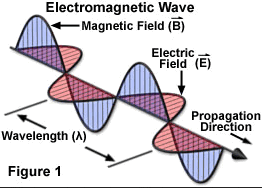
Electromagnetic radiation
Electromagnetic radiation (EM radiation or EMR) is a fundamental phenomenon of electromagnetism...
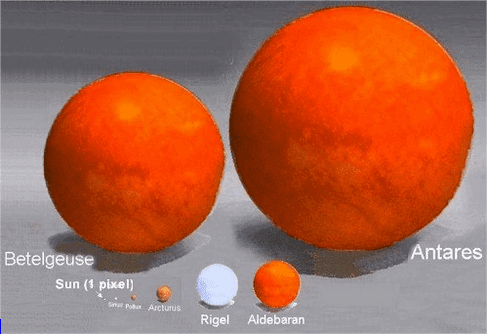
Massive stars
During their helium-burning phase, very high-mass stars with more than nine solar masses expand to form red supergiants...
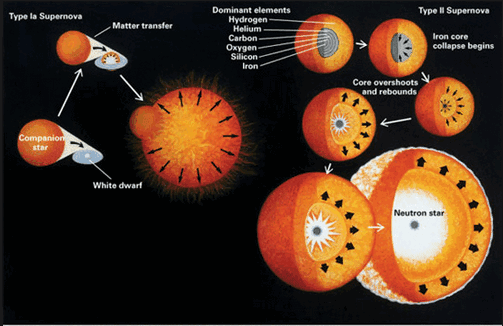
Stars Collapse
As a star's core shrinks, the intensity of radiation from that surface increases, creating such radiation pressure...
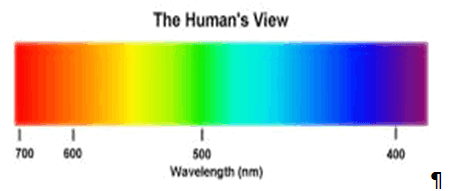
Animal color vision
Many species can see light with frequencies outside the human "visible spectrum"...

Visible spectrum
The visible spectrum is the portion of the electromagnetic spectrum that is visible to (can be detected by) the human eye...
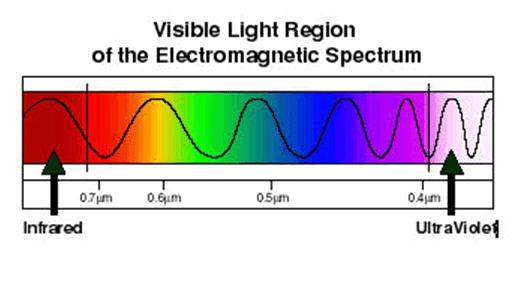
Electromagnetic Spectrum
A spectrum (plural spectra or spectrums) is a condition that is not limited to a specific set of values...







